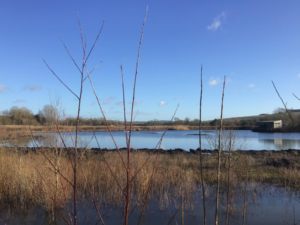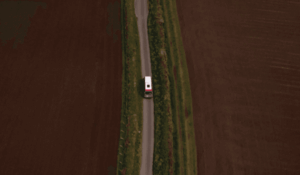Transport for Wales has set a target of no net loss of biodiversity in its operations by 2024 as part of an ambitious new Biodiversity Action Plan launched this week.
Using the Department for Environment, Food and Rural Affairs’ biodiversity metric for guidance, TfW is aiming to achieve no net loss of biodiversity through its work and, where possible, a biodiversity net gain.
The Biodiversity Action Plan sets out the principles Transport for Wales will embrace to ensure the organisation protects, enhances and champions wildlife, biodiversity and our ecosystems throughout its work.
James Price, Transport for Wales Chief Executive, said: “I’m really pleased to be able to share the Transport for Wales Biodiversity Action Plan. “We are absolutely committed to fulfilling our duties in protecting, enhancing and championing our biodiversity and ecosystems throughout our operations. We want to be seen as a leader and as an exemplar of sustainable transport, promoting Wales as leading the way in the sustainable management of natural resources which will enable the public and future generations to enjoy the beauty of the Wales.
“This ambitious plan will help ensure we are in the strongest possible position to deliver on this vision for our natural environment.”
TfW Ecologist Laura Jones said: “Our transport networks in Wales and the Borders have an essential role to play in protecting and enhancing our natural environment.
“This Biodiversity Action Plan forms a key component of our wider sustainability aims at Transport for Wales; it is our commitment to halt species decline, habitat degradation and protect our biodiversity and ecosystems throughout our operations. Our aspiration is – and always will be – that sustainable transport can positively contribute to the protection and enhancement of our wildlife.”
The five principles which make up the action plan are: no net loss of biodiversity, communication and transparency with the public and stakeholders about what TfW is doing and why, mainstreaming best practice throughout our operations, collaboration and engagement with wildlife organisations, stakeholders and local communities and a commitment to identifying and implementing biodiversity initiatives wherever possible.
Projects already underway include the replacement of habitat on a 2:1 basis at Llanwern, near Newport, where a new rail line is being constructed as part of a scheme to increase service capacity when major events are taking place in South Wales. More than 6 ha of mitigation broadleaved woodland was created along with 150 dormice boxes.
TfW was recently awarded £100,000 from the National Lottery Heritage Fund and Welsh Government’s Local Places for Nature scheme to enhance local biodiversity at and near railway stations.
The organisation will introduce green features at 22 stations and in five community areas near stations in areas of multiple depravation and where major enhancement works are taking place on the network. Features will include green walls, green roofs, planters, hanging baskets, native trees and water butts. Bird houses, bat boxes, bug hotels, hedgehog houses and ladybird houses will also be introduced where appropriate to boost local biodiversity.






















